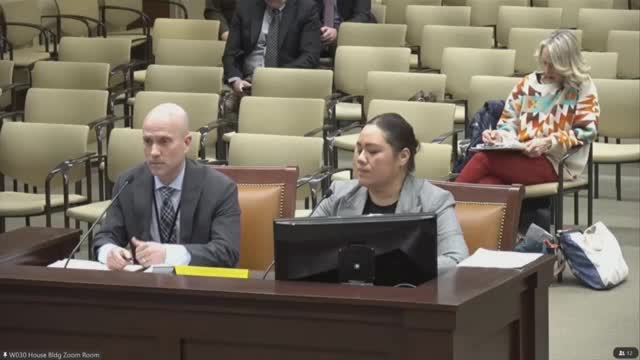Council addresses alarming online harassment of 11-year-old girl
February 06, 2025 | 2025 Utah Legislature, Utah Legislature, Utah Legislative Branch, Utah
This article was created by AI summarizing key points discussed. AI makes mistakes, so for full details and context, please refer to the video of the full meeting. Please report any errors so we can fix them. Report an error »

In a recent meeting of the House Law Enforcement and Criminal Justice Committee, a chilling discussion unfolded, shedding light on the alarming realities of online safety for children. As committee members gathered, the atmosphere was charged with urgency as they addressed the disturbing case of an 11-year-old girl who became a target of predatory behavior through virtual reality platforms.
One committee member, with the chair's permission, recounted explicit messages exchanged between the young girl and an individual she knew only through a friend. The messages revealed a troubling pattern of manipulation and coercion, where the individual urged the girl to engage in inappropriate acts, even asking her about her physical sensations in a deeply unsettling manner. The gravity of the situation was palpable as the member emphasized that this was not an isolated incident but rather a repeated offense by someone who was not a complete stranger.
The committee's discussions highlighted the urgent need for enhanced protections for children in digital spaces. As technology continues to evolve, so too do the tactics of those who seek to exploit the vulnerable. Lawmakers are now faced with the critical task of developing strategies to safeguard young users from such predatory behaviors, ensuring that virtual environments are not breeding grounds for abuse.
As the meeting progressed, the implications of this case resonated beyond the walls of the committee room. It served as a stark reminder of the challenges that lie ahead in the realm of child safety online. With the rise of virtual reality and other immersive technologies, the call for legislative action has never been more pressing. The committee's commitment to addressing these issues signals a pivotal moment in the ongoing fight to protect children in an increasingly digital world.
One committee member, with the chair's permission, recounted explicit messages exchanged between the young girl and an individual she knew only through a friend. The messages revealed a troubling pattern of manipulation and coercion, where the individual urged the girl to engage in inappropriate acts, even asking her about her physical sensations in a deeply unsettling manner. The gravity of the situation was palpable as the member emphasized that this was not an isolated incident but rather a repeated offense by someone who was not a complete stranger.
The committee's discussions highlighted the urgent need for enhanced protections for children in digital spaces. As technology continues to evolve, so too do the tactics of those who seek to exploit the vulnerable. Lawmakers are now faced with the critical task of developing strategies to safeguard young users from such predatory behaviors, ensuring that virtual environments are not breeding grounds for abuse.
As the meeting progressed, the implications of this case resonated beyond the walls of the committee room. It served as a stark reminder of the challenges that lie ahead in the realm of child safety online. With the rise of virtual reality and other immersive technologies, the call for legislative action has never been more pressing. The committee's commitment to addressing these issues signals a pivotal moment in the ongoing fight to protect children in an increasingly digital world.
View full meeting
This article is based on a recent meeting—watch the full video and explore the complete transcript for deeper insights into the discussion.
View full meeting

